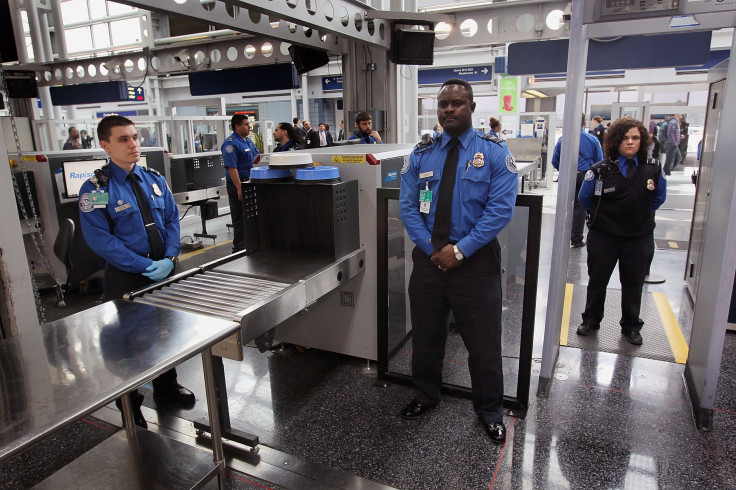TSA Tests 3-D Scanners At Airports To Improve Screening And Speed Up Security Checkpoints

The Transportation Security Administration (TSA) on Monday revealed it is testing new 3-D technology at select U.S. airports that will possibly speed up the time it takes passengers to get through security checkpoints.
The TSA said that it was placing 40 computed tomography (CT) scanners at 15 airports across the country by the end of 2018, according to a press release. The new technology is expected to cut down on the number of bag checks and may even allow passengers to leave items like laptops or liquids in their carry-on bags.
The new system utilizes sophisticated algorithms to detect explosives and creates a 3-D image allowing a security agent to observe a bag from different angles. This provides a more precise picture of a bag’s contents, thus making it much easier to detect explosives or weapons.
"Use of CT technology substantially improves TSA’s threat detection capability at the checkpoint," said TSA Administrator David Pekoske. "By leveraging strong partnerships with industry, we are able to deploy new technology quickly and see an immediate improvement in security effectiveness."
This new @TSA checkpoint CT scanner is now at @JFKairport and will be put in use starting tomorrow in Terminal 8 thanks to our partnership with @AmericanAir. It improves capability to detect explosives to keep passengers safe. pic.twitter.com/VAeARwz1fS
— TSAmedia_LisaF (@TSAmedia_LisaF) July 24, 2018
Some airports, like the Cincinnati/Northern Kentucky International Airport, already have the technology installed. According to WCPO, the airport is currently training its employees on how to use the new equipment. However, customers can expect limited use in the beginning, airport officials told the news outlet.
Each scanner has a price tag of roughly $300,000, according to the TSA. Besides the 40 machines that are expected to be installed nationwide, federal testing facilities are expected to receive 16 units. The TSA said it would install more than 145 units nationwide by the end of the fiscal year 2019.
The TSA first began testing out the technology in 2017 at Sky Harbor International Airport in Phoenix and Logan International in Boston. It recently installed a unit at the John F. Kennedy International Airport in New York.
News of the new technology comes as airport security has seen a record number of travelers passing through its checkpoints this year as it tries to find ways to cut down wait times during security screenings. The TSA on July 2 said it had screened about 2.68 million passengers and airline crew members on June 29, which was the second-busiest day in TSA’s history, according to the Associated Press. The busiest day was the Sunday after Thanksgiving 2004 when it screened 2.71 million people.
© Copyright IBTimes 2025. All rights reserved.



















